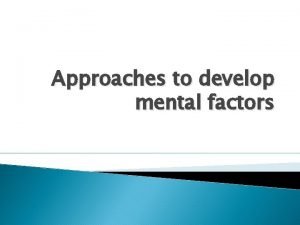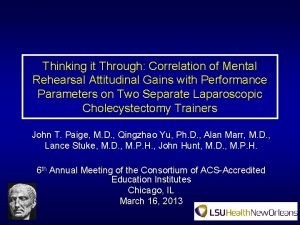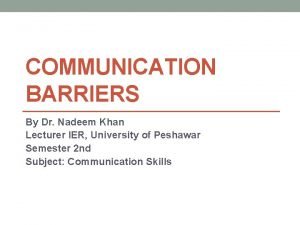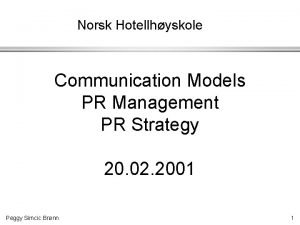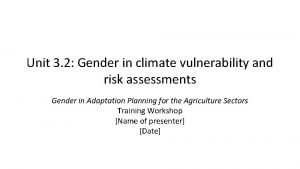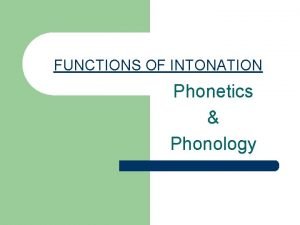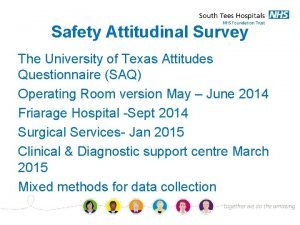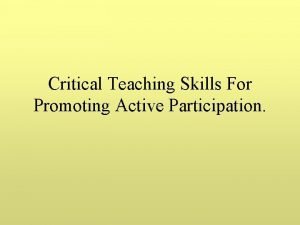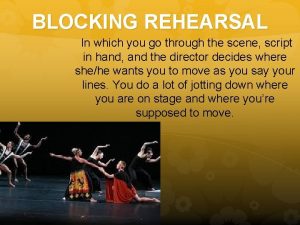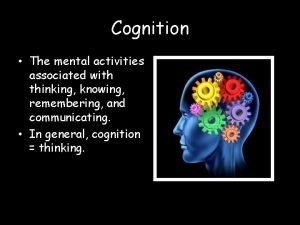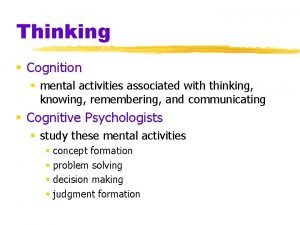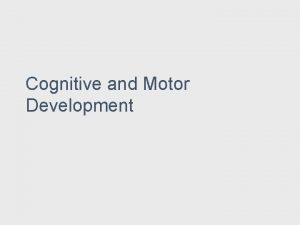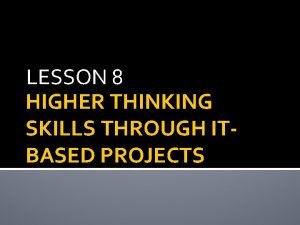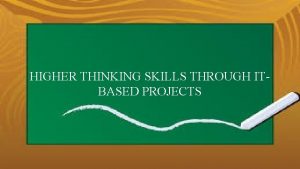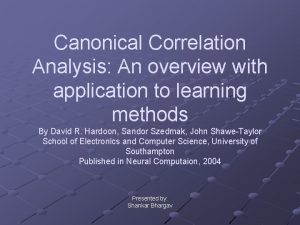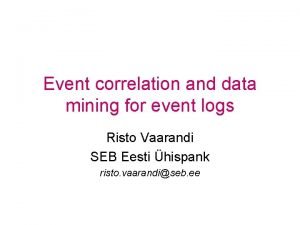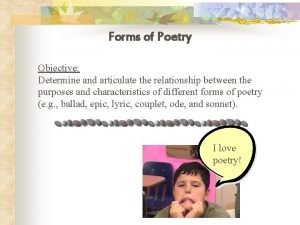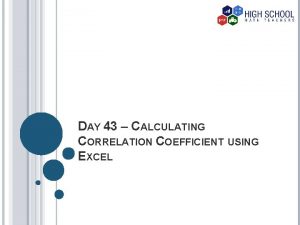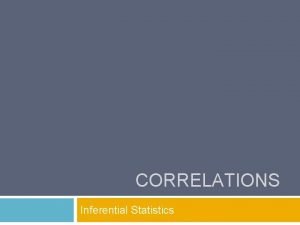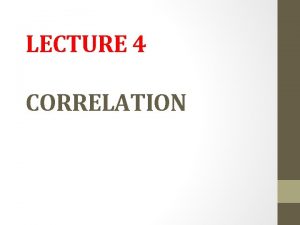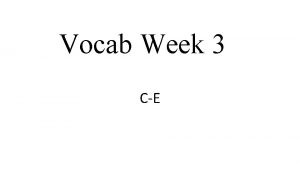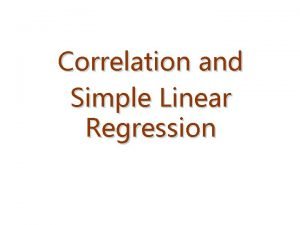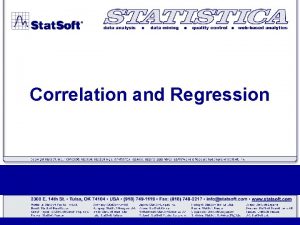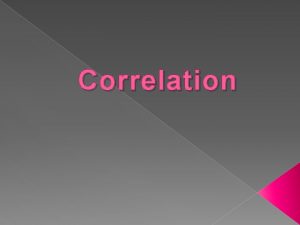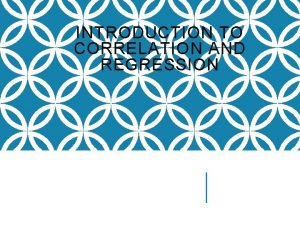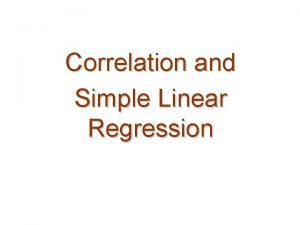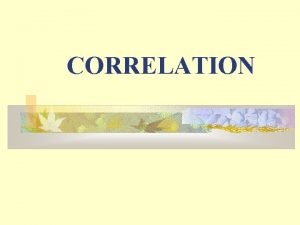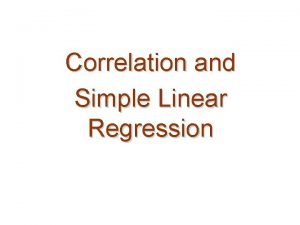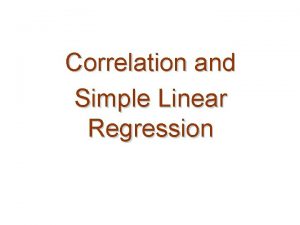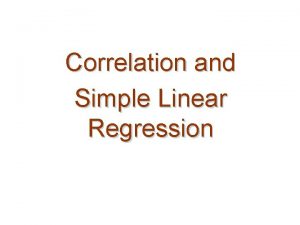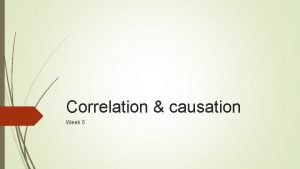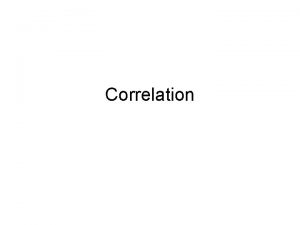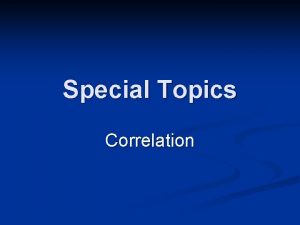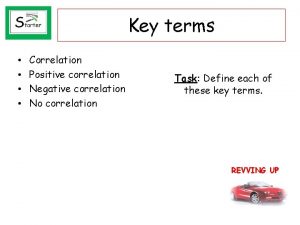Thinking it Through Correlation of Mental Rehearsal Attitudinal




































- Slides: 36

Thinking it Through: Correlation of Mental Rehearsal Attitudinal Gains with Performance Parameters on Two Separate Laparoscopic Cholecystectomy Trainers John T. Paige, M. D. , Qingzhao Yu, Ph. D. , Alan Marr, M. D. , Lance Stuke, M. D. , M. P. H. , John Hunt, M. D. , M. P. H. 6 th Annual Meeting of the Consortium of ACS-Accredited Education Institutes Chicago, IL March 16, 2013

Funding Support / Disclosures • Funding support: LSU Academy for the Advancement of Educational Scholarship Educational Enhancement Grant (20102011) • Disclosures: Co-editor for Simulation in Radiology

Goal • Promote the adoption of mental rehearsal in simulation-based training (SBT) to expedite learning

Objectives • Describe our laparoscopic cholecystectomy (lap CCY) SBT program • Evaluate the role of mental rehearsal in lap CCY SBT • Discuss future directions of our program and research

IDES RIDDLE

BEWARE!

Lap CCY SBT Curriculum

Why Lap CCY? • Bread and butter surgery • Morbidity risk • Introductory case • Amenable to SBT 600, 000 / yr PGY 2/3 Procedural Trainer (PT) 0. 4% = 2 X open Virtual Reality (VR) Trainer Wu YV and Linehan DC, Surg Clin North Am 2010; 90: 787 -802

Motor Skill Acquisition 1 • Fast Phase • Immediate improvement from first training session 2 • Consolidation Phase • Improvement at least 6 hrs from first session 3 • Slow Phase • Further gains across several training sessions 4 • Automatic Phase • Motor task performed automatically 5 • Retention Phase • Motor task executed in absence of any practice after long delay Gatti R et al. Neurosci Lett 2012 http: //dx. doi. org/10. 1016/j. neulet. 2012. 11. 039

Motor Learning Action Observation Motor Imagery • Observational learning • Mental rehearsal • Effective way to learn or enhance the performance of a particular motor skill • Leads to improvement in motor performance of targeted task(s) • Recruitment of brain areas involved in motor skills during observation • Recruitment similar brain areas as in action observation Gatti R et al. Neurosci Lett 2012 http: //dx. doi. org/10. 1016/j. neulet. 2012. 11. 039

Mental Rehearsal • Cognitive rehearsal of a task • • “Imagery practice” “Covert rehearsal” “Conceptualization” “Mental imagery rehearsal” Rogers RG. Obstet Gynecol Clin N Am 2006; 33: 297 -304.

Effective Characteristics of MR • • • Individual Supervised Non-directed Eyes closed Internal perspective Kinesthetic mode Schuster C. BMC Medicine 2011; 9: 75.

Prior Studies Lap CCY Training Basic Open Skills Sanders CW et al, Med Educ 2008; 42: 607 -612 Arora S et al, Ann Surg 2011; 253: 265 -270

Study Question • Is there a correlation between mental rehearsal and performance in lap CCY SBT based on the type of simulator used?

Study Design • Lap CCY surgical skills lab • Prospective analysis • Two models of SBT • Division of trainees based on PGY level

Participants • General surgical residents • PGY 1 thru 3 levels • Rotating in New Orleans region

Training Format • Standardized format • Didactic and SBT components • Distributed training

Didactic Component Pre-session reading Indications Steps Knowledge test MCQ Diagram Mental rehearsal Group Detailed

Mental Rehearsal Step by step verbal recital of lap CCY from start to finish

SBT – PT Trainer

SBT – VR Trainer

Mental Imagery Questionnaire S Arora et al. Surg Endosc. 2010; 24: 179 -187

Simulator Data Time to dissect out “critical view” Time to task completion Efficiency Accuracy Safe cautery Path length

Statistical Analysis • Calculation of scores for each MIQ item, gain scores, time to task completion (Mean values) • Paired t-test analysis of pre/ post-training scores (bonferroni adjustment) • Pearson correlations comparing MIQ scores with VR and PT scores • p< 0. 05 = significant

Results

Participants Characteristic PT Training in VOR VR Training Full completion SBT (n) 10 9 PGY 1 (n) 4 4 PGY 2 (n) 4 3 PGY 3 (n) 2 2 Self-report prior lap CCY (n) 16. 7 a 10. 5 a Self-report lap CCY expertise 2. 3 b 2. 0 b Peg transfer score (s) 115 97 1 c 1 c Partial completion SBT (n) an=7, bn=8, c. PGY 1

Results MIQ by Item Mean Pre-MR Score (SD)a Mean Post-MR Score (SD)a ∆ P-value Energized to do lap CCY 5. 5 (1. 6) 6. 0 (1. 3) 0. 5 0. 05 Confidence re: lap CCY 4. 9 (1. 7) 5. 8 (1. 0) 0. 9 <0. 001 Confidence vs colleague 5. 0 (1. 4) 5. 6 (1. 1) 0. 6 <0. 001 Helpfulness MR 5. 4 (1. 2) 5. 7 (1. 0) 0. 3 0. 13 “See” self doing lap CCY 5. 5 (1. 3) 5. 9 (1. 0) 0. 4 0. 01 Vividness images 5. 6 (1. 2) 6. 2 (1. 0) 0. 6 <0. 001 “Feel” self doing lap CCY 5. 3 (1. 3) 5. 7 (1. 0) 0. 4 0. 01 Talk thru steps 5. 8 (1. 0) 6. 3 (0. 9) 0. 5 <0. 001 an=Paired results for 17 of 19 residents completing training

Simulator Data Task Mean Pre Score, s Mean Post Score, s P value PT – Dissection critical view (n=10) 158 169 NS VR – Full procedure (n=4) 731 606 NS VR – Task 1 (n=9) 151 67 0. 007 VR – Task 2 (n=9) 124 85 0. 026 VR – Task 3 (n=9) 438 243 0. 004 VR – Task 4 (n=9) 322 196 NS

Pearson Correlation Task Pearson Correlation P value PT – Dissection critical view (n=10) 0. 645 NS VR – Task 1 (n=9) 0. 422 NS VR – Task 2 (n=9) -0. 764 0. 017 VR – Task 3 (n=9) -0. 280 NS VR – Task 4 (n=9) 0. 032 NS

Training Effectiveness

Discussion

Limitations • Small sample size • Proficiency training was not the goal • Mental rehearsal implementation weaknesses – group based, eyes open • Outcomes data not collected

Why Only One Correlation? • Most clearly imaginable • Most technically oriented of tasks • Weaknesses in training and mental rehearsal design

Conclusions • Group mental rehearsal appears to correlate with improved performance related to the two handed clipping and cutting task on VR. • Group mental rehearsal does not appear to correlate with improved performance on lap CCY training on a procedural trainer

Conclusions • Such findings may allow targeted use of mental rehearsal to accelerate skill acquisition

 Approaches for mental factor
Approaches for mental factor P value pearson correlation
P value pearson correlation Positive correlation versus negative correlation
Positive correlation versus negative correlation Positive correlation and negative correlation
Positive correlation and negative correlation Attitudinal barriers of communication
Attitudinal barriers of communication Management research question hierarchy
Management research question hierarchy Informational attitudinal behavioral objectives
Informational attitudinal behavioral objectives Attitudinal data
Attitudinal data Attitudinal vulnerability examples
Attitudinal vulnerability examples Discourse function of intonation examples
Discourse function of intonation examples Attitudinal survey
Attitudinal survey Oral rehearsal for writing
Oral rehearsal for writing Active participation strategies
Active participation strategies Polishing rehearsal
Polishing rehearsal Emotional events
Emotional events Chapter 20 mental health and mental illness
Chapter 20 mental health and mental illness Mental health coping skills jeopardy
Mental health coping skills jeopardy Cognition thinking
Cognition thinking All the mental activities associated with thinking
All the mental activities associated with thinking Holistic thinking example
Holistic thinking example Perbedaan critical thinking dan creative thinking
Perbedaan critical thinking dan creative thinking Positive thinking vs negative thinking examples
Positive thinking vs negative thinking examples Thinking about you thinking about me
Thinking about you thinking about me Thinking about your own thinking
Thinking about your own thinking Invention of new means through mental combinations
Invention of new means through mental combinations Higher thinking skills through it based projects
Higher thinking skills through it based projects Higher thinking skills through it-based projects
Higher thinking skills through it-based projects Advantages of timber conversion
Advantages of timber conversion Through one man sin entered the world, and through one man
Through one man sin entered the world, and through one man May the poison purify your flesh
May the poison purify your flesh Class 2 furcation
Class 2 furcation Canoncorr
Canoncorr Correlation rules in data mining
Correlation rules in data mining Correlation acrostic poem
Correlation acrostic poem Coefficient of correlation excel
Coefficient of correlation excel Pairwise correlation
Pairwise correlation Inferential statistics correlation
Inferential statistics correlation
